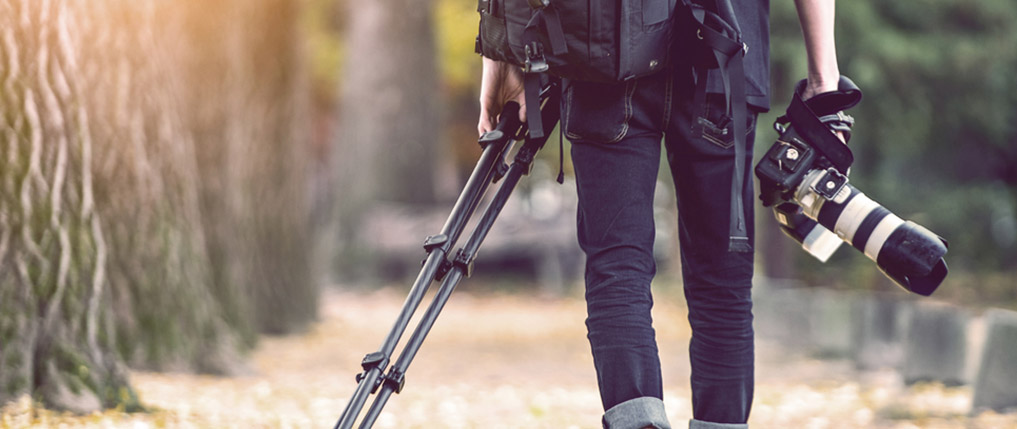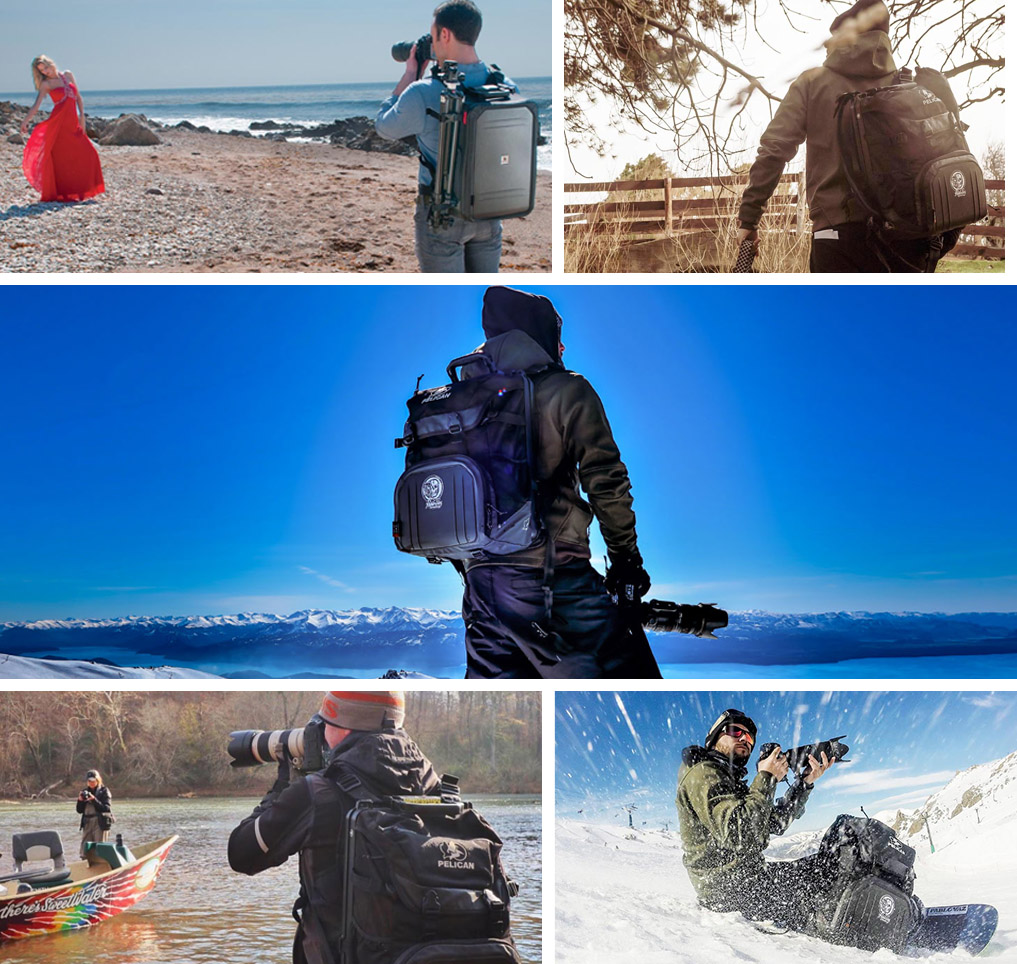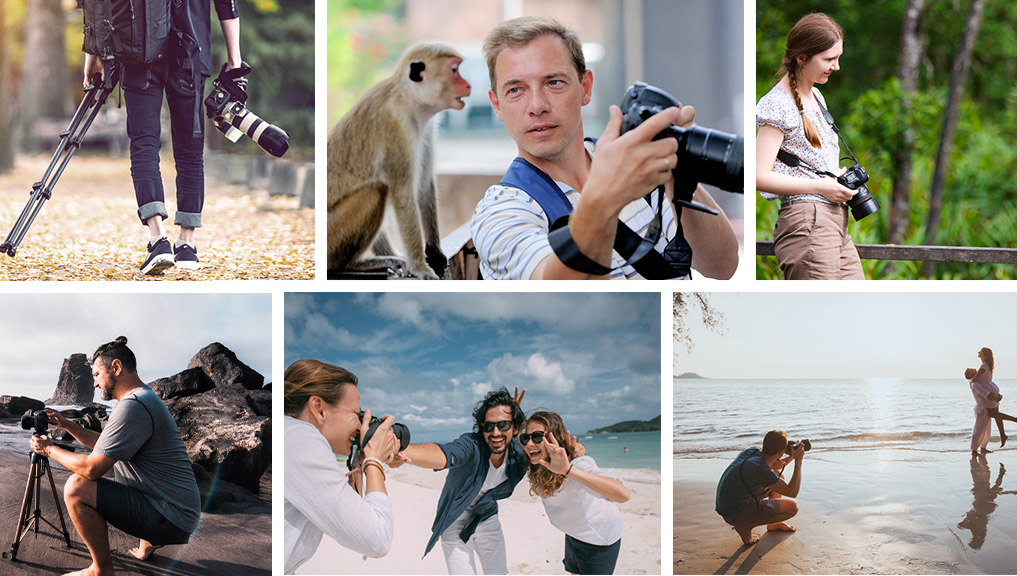19 Travel Photography Tips for Your Next Adventure
November 21, 2020

Travel photography is becoming a popular activity and a skill. From Instagram to content creation, the demand is also quite high and ever present, too. Are you a wanderlust traveler who thinks they have what it takes to be a travel photographer, too? Why not try? Grab your camera case and sense of adventure! Here are 19 travel photography tips for capturing the perfect shot.
Pre-Trip Planning
Like anything, travel photography takes planning. From practice to research, use these travel photography tips when booking your adventures.
1. Practice with Your Camera
Before you head off on your great adventure, make time to get practice with your camera. Whether you already own or choose to go with a DSLR, Mirrorless or Point and Shoot Camera, get familiar with all the buttons and watch some YouTube tutorials. Knowing your device inside and out will prepare you for quick shots.
Keep in mind, however, that you don’t necessarily need to fork out tons of money for a professional camera. With today’s advances, your smartphone can do just fine! Smartphones also offer features like night mode, which can help you capture shots during dusk or nighttime hours. Unless you’re entering a National Geographic competition, a smartphone camera might be all you need.

2. Do Your Research Ahead of Time
Before you even book your accommodations, do your research and discover places where you’d like to take photos. Use an Instagram, Pinterest and simple Google search to dig into the far-off destination and discover some of its most beautiful sights and wonders. You can even ask friends and family members for recommendations.
3. Establish a Route
Take your list of must-see destinations and, using Google Maps, put a star or flag a location to establish a route. Plotting out each place and planning a decided route to follow often helps to avoid missing one-of-a-kind locations and wasting time backtracking. Plus, it allows you to see how much time it might take you to get from Point A to Point B – not to mention how to get there.
4. Travel Light and Dress Comfortable
As a general rule of thumb, you want to travel as light as possible. Dragging around multiple pieces of heavy luggage will only hinder you. Instead, try to limit yourself to one carry-on style luggage piece, plus a camera backpack to keep your camera gear and equipment good and protected. Alternatively, you could carry a clothes duffel for personal items and a more rugged, watertight camera hard case for extra protection.
Remember to dress comfortably as well. Carry shoes or boots with a supportive arch since you’ll be walking everywhere to capture those shots! When it comes to your wardrobe, double-check the weather and think layers! Also, pack only the necessities and aim to carry just enough clothes to get by (you can always use a hotel’s laundry services on longer trips).

Upon Arrival to Your Locale
From the moment you leave the airport, you’re eager to take out your camera – great! But keep these travel photography tips in mind as you begin to explore.
5. Avoid the Tourists
Avoid the tourists by getting up early and staying out late. Yes, it’s going to be challenging to not sleep through the alarm after jet lag, but just imagine the amazing shots you’ll get! And all without people wandering around and standing in your shot! If you plan to visit a top destination, avoiding tourists can be tricky, but you can beat the rush if you try.
By staying out late, you can also avoid tourists and capture some wonderful photos. Find that golden hour of sunlight and avoid the brightness during the day as tourists linger off to grab dinner and head back to the hotel. During this time, and with the right equipment, you can capture evening shots, like cityscapes with twinkling lights and the beauty of the natural landscape. Learn how to photograph stars for a spectacular travel photograph.

6. Be Patient
Of course, avoiding tourists is not always an option. Sometimes, you simply don’t have a choice. For these moments, remember to be patient. Stand your ground for a few minutes and, in time, they will depart and a clearing will open up for you to take the perfect shot.
Tourists are not the only thing you have to be patient for. Capturing local wildlife takes patience as well. Even if you have to come back day after day, getting a shot of that elusive animal can pay off. So stay patient and composed as you wait.
7. Explore Different Angles
Don’t take the same shot you saw a thousand times over on Instagram. Explore different angles of that breathtaking landscape or historic building. When you get more creative by snapping a shot from an unexpected angle and perspective, you might be pleasantly surprised. So remember to work your way around the destination instead of repeating what’s already been done.
8. Get Off the Beaten Path
Speaking of not being repetitive, why not get off the beaten path? Not only does it take you away from the crowded hotspots and tourists, but it opens you up to new discoveries and unique areas that a guidebook might not mention. From side streets packed with food vendors to an antique store filled with curiosities and unique items, you can find great travel photography in unexpected places. Sometimes, it’s these places you remember the most.

Understand Artistic Photography Fundamentals
As a photographer, there are some basic fundamental design rules you need to understand. Here are some of the basics you can use as you take snapshots of your locale.
9. Remember the Rule of Thirds
Remember the Rule of Thirds when taking a photo. This basic principle breaks down an image into nine boxes spread horizontally and vertically across the shot. You can do this with an LCD viewfinder display or in your mind, whichever you prefer. But however you choose, use the grid to identify four points of the image to frame the shot in a well-composed way. In theory, placing your points of interest along the lines creates balance that is more aesthetically-pleasing.
10. Practice with Composition
While the Rule of Thirds is an excellent starting point, don't forget to practice with composition. Experiment with composition by moving the subject matter around within the nine boxes. Try it in the middle, off to the side and even near the top. Many times, asymmetry works in your favor, making a photo much more interesting to viewers.
11. Fill the Frame
Sometimes, your subject matter simply needs to fill the entire frame. Instead of having negative space or a background, you can take an up-close shot (even a Macro). Often, you might have to find ways to fill out the photo yourself, framing it with nearby elements – essentially, to fill the frame you want to eliminate open spaces in the foreground.
12. Capture the Details
Once you capture the main subject matter, remember to capture the smaller details. It’s these details that can tell more of a story. For instance, while you get an amazing shot of architecture, take closer shots of the masonry or the surrounding gardens. You might also capture the details in the locals who come to visit or the intricate designs in the stained glass. Just be sure not to walk away from a spot without taking a second look around for these charming little gems.
13. Use Photo Editing Tools
While you might get lots of practice on your travels and take some pretty amazing photos, photo editing tools can enhance your images even further. However, while photo editing software can cost a professional photographer thousands of dollars, there are more affordable options. And even more affordable, there are photo editing tools you can subscribe to for a few months at a time.
For instance, check out the Adobe Creative Cloud Photography plan, which costs only $9.99 per month. Once an expensive software, Adobe has offered this inexpensive cloud service for beginner photographers. From there, you can purchase lightroom presets so that you can effortlessly edit all your photos to look consistent.

14. Crop Your Photos
If a photo is feeling a bit “blah,” play around with the composition and rule of thirds by cropping it. A well-constructed crop job might transform something boring into something breathtaking. Look for angles and areas that should be removed (like that wandering tourist) and that take away from the grandeur of the subject matter. Start with the foregrounds and sides and go from there. Before deleting a photo, see if it has potential first.
Extra Tips
Last, but not least, here are some extra travel photography tips to keep in mind as you explore far-off destinations. These tips and tricks offer practical insight and guidance that are sure to come in handy.
15. Practice Improves Your Skills
Practicing at home before your trip is one thing. Practicing in the field is another. And the more you practice, the better your travel photography will get! So with any spare moment, take shots. Even if you end up deleting them later, it offers practice and hones your skills for the shots you do keep. Remember that even the most professional photographers had to start somewhere. And don’t be hard on yourself, you’ll get better in time!

16. Keep Your Camera Close at Hand
Always keep your camera on you. Many photographers would argue this for safety reasons alone. However, having your camera close at hand gives you the advantage. When your gear is accessible and ready at-the-go, you can create quick snapshots of fortuitous moments that can make memories that last a lifetime. Of course, if you can’t pull out a camera in time, a smartphone works, too! Just grab the moment before it’s gone.
17. Remember to Experience the Moment
In other words, know when to put the camera down and be present in the moment. While a photograph can get you tons of likes on Insta, sometimes a special moment is deserving of your undivided attention so that you can appreciate it and take it all in. Often, these are the moments that you remember most about your trip.
18. Choose a Centrally Located Accommodation
When planning, try to choose a centrally located accommodation where you can hang your hat. This way, you can go back and rest when needed or just be near the hustle and bustle and liveliness of the city. Bonus points for booking a lovely hotel room or Airbnb with a gorgeous view that provides the opportunity for more travel photos! Whether it’s a balcony with a view or a rural farm with an unobstructed view of the mountains, the accommodation you choose can play a huge role in your adventure.
19. Backup Your Photos
Always be backing up your photos – seriously! Of all the potential issues to have on your adventures, losing all your photos is one of the worst fears. So do yourself a favor and backup your photos each and every evening. It also doesn’t hurt to carry spare batteries and a memory card, just in case. If not, you might be kicking yourself, only to appreciate the destination burned only to memory.
A travel photographer knows to always carry extras of the following items:
- Batteries
- Power or Charging Cords
- External Hard Drive
- Memory Cards
Ready to go explore? With these travel photography tips, you’ll be ready and armed to take the perfect snapshot of your next adventures.

SIGN UP FOR EXCLUSIVE OFFERS
Sign up for our newsletter and get exclusive access to new product launches, special offers and much more.
RELATED BLOGS














